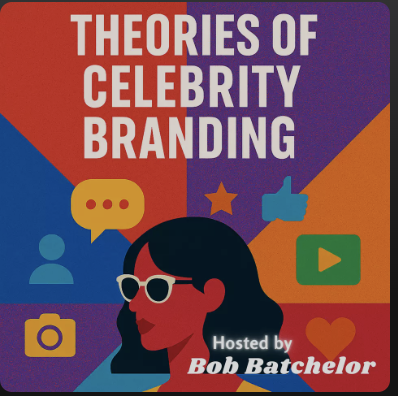Lee moved to another project, calling it “my all-time strangest assignment,” creating anti-venereal disease posters aimed at troops in Europe. Sexually transmitted diseases had plagued armies throughout history. American leaders considered the effort deadly serious. Despite implementing extensive education campaigns, the military still lost men to syphilis and gonorrhea. The British – less willing to confront the taboo epidemic – had 40,000 men a month being treated for VD during the Italian campaign.
Military leaders went to extreme measures to thwart STDs, including the creation of propaganda posters showing Hitler, Mussolini, and Tojo deliberately plotting to disable Allied troops via disease. Many of these images, such as the ones famously created by artist Arthur Szyk, depicted the Axis leaders as subhuman animals, with rat-like features or as ugly buffoons.
Unsure how to combat the scourge, Lee promoted the prophylactic stations set up by the armed forces. Men visited the huts when they thought they were infected, which involved a series of rough and painful treatments. “Those little pro stations dotted the landscape,” Stan said, “with small green lights above the entrance to make them easily recognizable.” He wrestled with different taglines, ultimately hitting upon the simplest: “VD? Not me!”
Lee illustrated the poster with a cartoon image of a happy serviceman walking into the station, the green light clearly visible. Army leaders liked its simplicity and flooded bases with the posters. Ironically, the print may have ranked among Lee’s most-seen, yet also the most roundly ignored.
According to lore, the other “playwrights” couldn’t keep up with Stan, forcing the commanding officer to order him to slow down. While it is difficult to quantify the importance of the films, posters, photos, and training aids the Signal Corps produced, analysts determined they cut training time by 30 percent. Signal Corps efforts also provided from 30 percent to 50 percent of newsreel footage for movie theaters, which kept the public informed. Lee, Capra, Geisel, and the other Army “playwrights” did vital work.
Lee used downtime to keep his fingers dipped in Timely ink and his pockets filled with Goodman’s money as a freelance writer. With the extra money, Stan purchased his first automobile for $20 – a 1936 Plymouth with a fold-up windshield. Stationed near Duke University in Durham, North Carolina, the unique windshield allowed the warm Southern air to blow in his face as he cruised the back roads of tobacco country.
No matter where the Army sent him, Lee received letters outlining stories from Fago every Friday. Stan then typed up the scripts, sending them back on Monday. In addition to working on comics, Lee also helped out with the pulps. He wrote cartoon captions for Read! magazine, including this short ditty in January 1943: “A buzz-saw can cut you in two / A machinegun can drill you right thru / But these things are tame, compared— / To what a woman can do!” The accompanying drawing shows a plump woman feeding her bald husband – chained to a doghouse. The ribald humor fit within Goodman’s magazines, filled with sexist overtones and racy photographs.
Stan also wrote mystery-with-a-twist-ending short stories, similar to the ones in Captain America. In “Only the Blind Can See” (Joker, 1943-1944), the gag is on the reader, who eventually realizes a supposedly blind panhandler (assumed a phony) was telling the truth. Written in second person so Lee can speak directly to the reader (addressed as “Buddy”), one learns that the down-on-his-luck beggar had been too prideful. The truth comes to light when a speeding car hits the blind man. These short stories served as training for the science fiction and monster comic books that Lee would write after the war.
Stan’s afterhours writing for Timely went largely unnoticed by his superiors, but once got him arrested (in typical Lee madcap fashion). One Friday a bored mail clerk overlooked Stan’s letter, reporting an empty mailbox. Lee swung by the closed mailroom on Saturday and spied a letter in his cubby – with the Timely return address.
Fearful of missing a deadline, Lee asked the officer in charge for the letter. The harried officer told Lee to worry about the mail on Monday. Angry, Stan used a screwdriver to gently loosen the hinges and freeing the missive. When he realized what Lee did, the mailroom supervisor went berserk, reporting him to the base captain. They charged Lee with mail tampering and threatened to throw him in Leavenworth prison. Luckily, the colonel in charge of the Finance Department intervened. In this instance, Fiscal Freddy really did save the day!
***
Stan’s signature and a quick roll of his ink-stained thumb across the Army discharge papers made it official – in late September 1945 Sergeant Lee returned to civilian life. Practically before the ink dried, the 23-year old roared off base. His new black Buick convertible had hot red leather seats, flashy whitewall tires, and shiny hubcaps – a noticeable upgrade from the battered, $20 Plymouth.
Lee received a $200 bonus (called “muster out pay”), given to soldiers so they could jumpstart their post-military lives. Half went into a savings account and Lee pocketed the rest. The Army had allotted him $42.12 to get back to New York City from Camp Atterbury in central Indiana, about 50 miles south Fort Harrison.
Excited to get back to the Big Apple, Stan joked that he “burned my uniform, hopped into my car, and made it non-stop back to New York in possibly the same speed as the Concorde!” The editor desk awaited in the new headquarters on the fourteenth floor of the Empire State Building. Lee zoomed off on the 700-mile trip to the Big Apple.

















